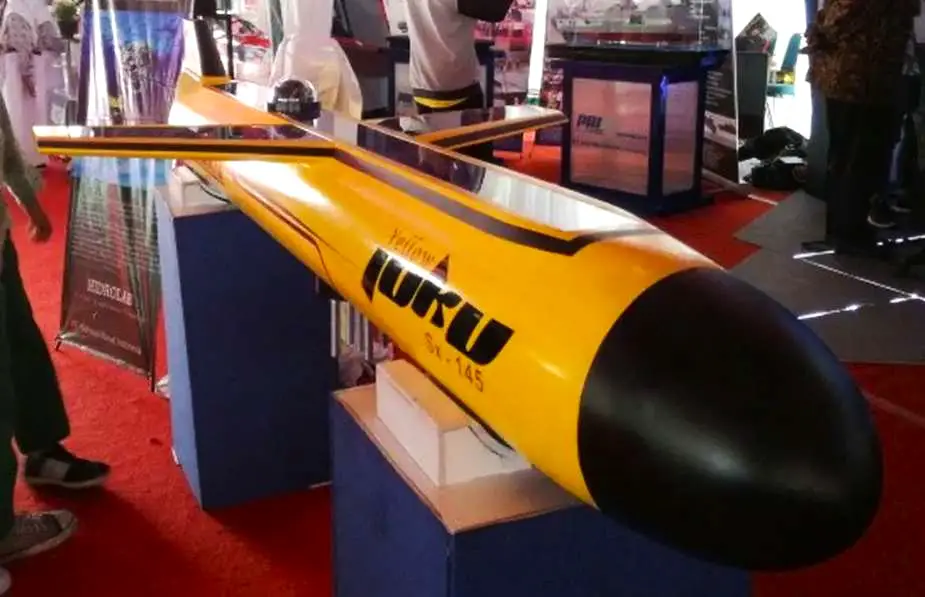Breaking news
Indonesia positions unmanned vehicles in its defense strategic planning.
The Indonesia draft defense posture until 2044, as discussed in Defense Studies, acknowledges the evolving landscape of defense technology, particularly the growing use of unmanned vehicles in military applications. This trend extends to strategic defense planning and its translation into weapon procurement, whether funded through PLN or Domestic Loans.
Follow Army Recognition on Google News at this link

Sentry Gun, an Unmanned Ground Combat Vehicle designed in collaboration with PT Ansa Solusitama in 2019 (Picture source: Ansa Solusitama)
Looking ahead, long-term defense strategies must account for the combined utilization of unmanned and manned vehicles. This approach aligns with the Manned-Unmanned Teaming (MUM-T) concept employed by developed nations, exemplified in the Afghanistan conflict. In maritime operations, MUM-T integrates manned assets like surface ships, submarines, and aircraft with unmanned vehicles such as UUVs and USVs, necessitating a secure and encrypted data link.
The presence of unmanned vehicles in Indonesia's defense market hinges on market demand, which typically stems from the Ministry of Defense. Foreign industries are unlikely to offer solutions without clear market needs, hindering the domestic defense industry's independent or collaborative development of unmanned vehicle products. As defense markets are niche, government intervention is required to create market demand.
To foster competitiveness in unmanned vehicles, the national defense industry should master defense electronics technology. Collaboration with foreign defense industries with expertise in this sector, possibly through joint ventures, can facilitate knowledge transfer. The domestic defense industry should not hesitate to learn from global players in defense electronics.
Indonesia occupies a challenging position in the competition between the U.S. and China in the Pacific region, despite official denials. Economic cooperation with China has not translated into respect for Indonesia's sovereignty in the South China Sea. Consequently, Indonesia leans toward closer security cooperation with the U.S., including intelligence sharing and joint military exercises.
This discomfort with China is reflected in Indonesia's weapon procurement history. The majority of purchases financed by Foreign Loans (PLN) have come from NATO countries and U.S. allies, with only limited acquisitions from China, primarily CH-4B drones and QW-3 air defense missiles. Indonesia redirected funds initially earmarked for a Chinese destroyer purchase towards buying F-15EX Strike Eagle fighters from the U.S.
Presently, Indonesia is concluding the 2010-2024 Minimum Essential Force (MEF) program, with substantial budget allocations, including US$8.3 billion for the Indonesian Navy. The Navy's procurement plans include frigates and submarines to address strategic challenges and modernize its forces.
The submarine acquisition program, valued at US$2.1 billion, faces challenges related to foreign shipyards' willingness to collaborate with local shipyards. While Naval Group (France) is committed to cooperation and technology transfer, other European shipyards are hesitant, citing concerns about the capabilities of domestic shipyards. These concerns must be addressed to enhance Indonesia's underwater warfare capabilities.

USV designed in cooperation with PT. Infoglobal Universal Technology in 2019 (Picture source: Indonesia Ministry of Defense)
As technology evolves, underwater warfare extends beyond submarines to encompass unmanned vehicles like Underwater Unmanned Vehicles (UUVs) and Unmanned Surface Vehicles (USVs). Recent events, such as the conflict in Ukraine, demonstrate the potential of USVs as formidable assets in disabling warships. UUVs and USVs offer operational advantages in high-risk water areas.
In preparation for the 2025-2044 defense strategy, the Ministry of Defense will draft a defense posture that will guide future defense strategic plans, including those of the Indonesian Navy, Defense Studies concludes.

The Underwater Glider Yellow Juku UUV can dive as low as 1,000 meters deep (Picture source: Liputan6)
Defense News October 2023

























